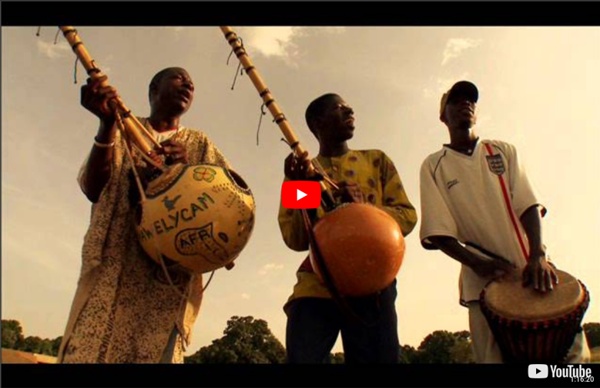



http://www.youtube.com/watch?v=qEwnHf9Q23k
Related: antropologiaMusic of Africa Women from the Masai tribe, singing. The music of Africa is as vast and varied as the continent's many regions, nations, and ethnic groups. The African continent comprises approximately 20 percent of the world's land mass and has a population of roughly 934 million. Bongeziwe Mabandla: a new voice for African folk music Written mostly in Xhosa, his texts evoke his quest for the self and the struggles young people have to deal with. Resolutely unplugged, deeply inspired by African traditional sonorities, his music echoes influences as diverse as Laurynn Hill or the recently deceased Busi Mhlongo. Bongeziwe Mabandla is the rising star of the South African folk music – he has just been short-listed for the prestigious Prix Découverte of Radio France Internationale awarding the best African or Caribbean new musical talent of the year. As he prepares to perform on stage at the Alliance française of Johannesburg on the 17th of September, Intofrench has met him to understand where he draws inspiration from and what are his artistic expectations. A genuine sound
What is celtic music? The term 'celtic music' is a rather loose one; for the purpose of Ceolas, it covers the traditional music of the celtic countries - Ireland, Scotland, Wales, Brittany (in France), Galicia (in Spain) and areas which have come under their influence, such as the US and the maritime provinces of Canada, as well as some newer music based on the tradition from these countries. The term is sometimes controversial. For starters, the Celts as an identifiable race are long gone, there are strong differences between traditional music in the different countries, and many of the similarities are due to more recent influences. There is also the notion that 'celtic' implies celtic mysticism and a particular influence in new-age music which has little to do with traditional music. In general, the strongest connections are between Irish and Scottish tradition and it is on these that Ceolas concentrates.
West African Song and Chants: Children’s Music from Ghana - Smithsonian Folkways Designed by: Karen Howard University of Washington Summary With these segments, teachers are offered opportunities to use children’s music from Ghana, West Africa, to gain experience with basic polyrhythmic ensembles. Singing, chanting, dancing and playing instruments are included throughout the unit. Suggested Grade Levels: 3-5, 6-8 Country: Ghana Region: Volta Region, Ashanti Region, Central Region Culture Group: Ewe, Akan, Ga Genre: children’s social music Instruments: Voice, Clapping, Firikiwa, Tokee, Gankogui, Drum Language: Ewe, Twi, Ga Co-Curricular Areas: Social Studies National Standards: 1, 2, 5, 6, 7, 8, 9 Prerequisites: Experience with combining multiple rhythms together using voice and body percussion, reading quarter note/ two eighth notes/ quarter rest/ dotted quarter-eighth note
About Japanese Music The earliest forms of music were drums and flute music accompanying the kagura shrine dances. From the 6th century on, music came from Korean and Chinese courts and monasteries and was performed at the Japanese court under the generic name gagaku (court music). The 8th-century court established a music bureau (gagakuryo) to be in charge of musical duties, both ritual and entertainment.
Music of Indonesia The music of Indonesia demonstrates its cultural diversity, the local musical creativity, as well as subsequent foreign musical influences that shaped contemporary music scenes of Indonesia. Nearly thousands of Indonesian islands having its own cultural and artistic history and character.[1] This results in hundreds of different forms of music, which often accompanies by dance and theatre. Traditional regional musics and songs of Indonesia natively compromises of strong beat and harmony type musics with strong influence of California and Malay classical music.
What is Jewish Music? Jewish music stems from ancient prayer chants of the Levant some 3000 years ago. The musical notation that developed and that we find in the bible today is one of the most ancient forms of notated music, and yet it is still in current practice all over the world today. Jewish music has been constantly adapting to new conditions and yet retaining its identity in many widely differing ethnic, social and religious environments. Klezmer Music 101 - Jewish Traditions By Megan Romer Updated October 04, 2016. Originally, the word "klezmer," from the Yiddish language, meant "vessel of song" and later, simply "musician." However, it has come to characterize the style of secular music played by Ashkenazi Jews for joyful celebrations such as weddings.